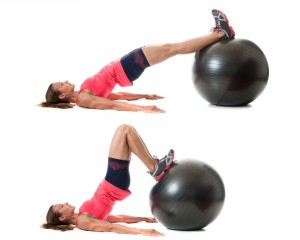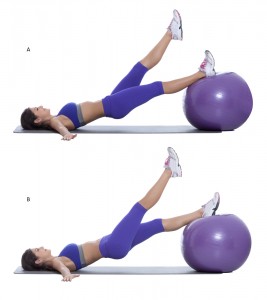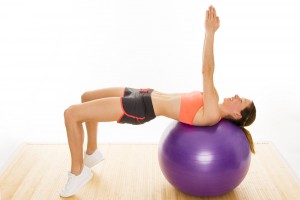Posted on September 10, 2015 by Jenny Cromack
If you have suffered from a hernia and are looking to get back into activity safely without re-injury or exacerbating your hernia it is important to address the commonly weak areas that may have contributed to the development of a hernia. In a lot of cases with hernias a weakness in the abdominal tissues has resulted in herniation.
Therefore when reintroducing yourself to exercise the core and trunk needs to be strengthened and we need to ensure that these muscles are able to endure future, more intense exercises so we do not have a reoccurrence of the hernia. This article will provides some hernia recovery exercises and a brief overview of stages to progress through when starting to recover from a hernia.
Things to Initially Avoid…
When coming back to exercise it is never a good idea to simply pick up where you left off. You should avoid the following until you have re-trained some core strength and endurance or until any surgical or treatment procedure has healed and a medical professional gives you clearance to engage in normal activities again.
- Heavy Lifting
- Forceful Pushing or Pulling
- Any activities that force you to hold your breath
- Forceful contraction of the abdominals (i.e. sit ups)
These are only to be avoided whilst your hernia is recovering and core strength is built up and restored. These activities can then be reintroduced progressively after you have progressed through the following phases.
Phase I:
This phase is aimed to retrain the activation of the deep muscles of the core known as the transversus abdominus and multifidus. These muscle are very important for stabilising the core. In this phase we are looking to be able to voluntarily contract these deep muscles without compromising body position or overcompensating with other core muscles (which is very common).
To do this kneel on all fours and keep your spine and pelvis level. Then draw your belly button towards your spine without holding your breath or contracting your abdominals (6 pack muscle). The best way to achieve this is to imagine you are holding in the need to urinate. Once you have mastered the contraction, hold it for 4-5 seconds for 10 sets. Once you can do this you can move on to holding for increased duration up to 10, 20, and 30 seconds for sets of 10. Then try the same but in different positions such as standing, sitting, lying face down and face up.
Phase II:
The next phase is to introduce the ability to contract these deep core muscles with dynamic movements. With the following exercise if you notice your abdominals take over or your spine start to arch reset and start again.
- Superman with Arms Only – kneel on all fours as with the Phase I exercise and contract the deep core muscles. Then slowly raise one arm to horizontal and maintain the contraction of the deep muscles. Pause for 2-4 seconds then lower the arm and repeat with the opposite arm. Do this for 10 reps on each arm.
- Supermen with Arms and Legs – once you can master the contraction with the arm movements we can introduce the legs. This time as you raise your arm simultaneously raise the opposite leg to horizontal. Hold for 2-4 seconds, lower both down and repeat with the other arm and leg. Do this for 10 reps on pair.
Phase III:
By this phase contracting the deep core muscles should be second nature to you. The aim of this phase is work on introducing groups of muscles and build strength and endurance in these muscles.
- Swiss Ball Glute Bridges – lie on your back with shoulders flat and feet up on the swiss ball with the legs out straight. Then lift the hips up off the floor, and roll the ball towards your bum. Throughout this movement keep you pelvis level and core muscles engaged. Do 2 sets of 15 reps.
- Swiss Ball Straight Leg Raise – lie on your back with shoulders in contact with the floor, raise the hips up off the floor so your body is rigid and straight. Once you are stable gently raise one leg straight up off the ball, maintain as much stability as you can for 2-4 seconds, then lower it back down and repeat with the other leg. Do 2 sets of 10 on each leg.
- Swiss Ball Trunk Rotations – lie with your back on the swiss ball but hips off the ball. Keep the spine and hips levels and parallel with the floor, then grasp a weighted ball, or something to add some weight, with both hands. Hold it directly over the chest with straight arms then gently rotate the torso to one side, keeping the arms straight. Then return to the middle and repeat on the other side. Whilst rotating keep the hips lifted and parallel with the floor. Do 2 sets of 20 reps.
- Plank – lie face down on the floor with your forearms on the floor and elbows under the shoulders. Then lift your body up off the floor so you are supported by your elbows and your toes. Hold the hips and whole body level, and keeping breathing throughout. Hold this position for as long as you can working up to 30-45 seconds and do 2 sets.
Moving On…
Once you can complete all of the above with good core control, balance, and no pain or feeling of strain over your hernia site you can seek medical clearance to progress to more intense activities. It is always a good idea to seek medical, professional advice before moving straight back into heavy intense activity.







